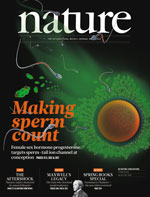What would Charles Darwin make of renal cell carcinoma?
At the last count, the renal cell carcinoma (RCC) space is quite competitive with five VEGF inhibitors (sunitinib, sorafenib, axitinib, pazopanib and bevacizumab), two mTOR blockers (temsirolimus and everolimus) and not forgetting IL–2, all approved by the FDA for the treatment of advanced disease.
Much of the recent focus has been on sequencing, exploring combinations (generally too toxic with little added benefit), and evaluating the potential for novel immunotherapies in development such as checkpoint inhibitors. Biomarkers are few and far between, making it hard to rationally decide which therapy each patient should get and in which sequence.
The key question is, why is this tumour type so challenging from a clinical and scientific perspective?
 Recently, new data has begun to emerge that may help inform or enable us to switch to new approaches. While the urologists are eagerly watching the live surgery on the EAU cam, we highlight research data presented at the European Association of Urology (EAU) in Madrid and take a look at how the underlying biology of RCC can elevate our knowledge about where the potential future strategies and blueprint might lie, if we want to facilitate exciting new developments in this field.
Recently, new data has begun to emerge that may help inform or enable us to switch to new approaches. While the urologists are eagerly watching the live surgery on the EAU cam, we highlight research data presented at the European Association of Urology (EAU) in Madrid and take a look at how the underlying biology of RCC can elevate our knowledge about where the potential future strategies and blueprint might lie, if we want to facilitate exciting new developments in this field.
To learn more about our latest insights, subscribers can log-in or you can purchase access to BSB Premium Content.
This content is restricted to subscribers
